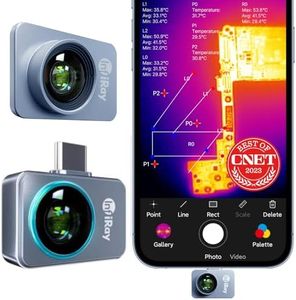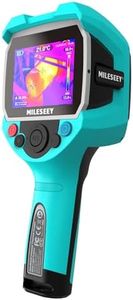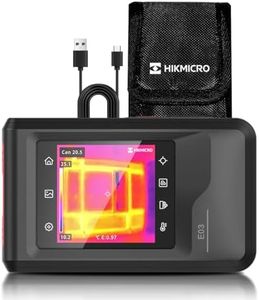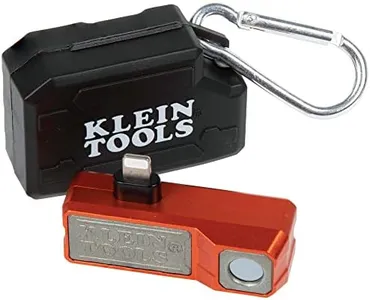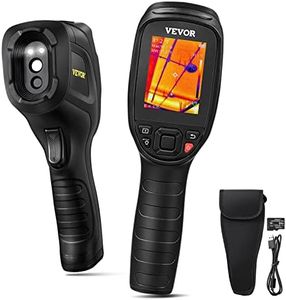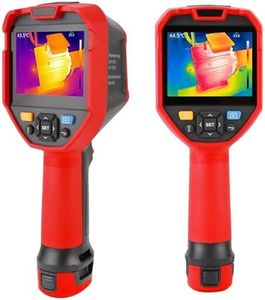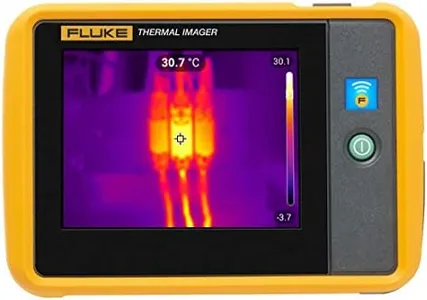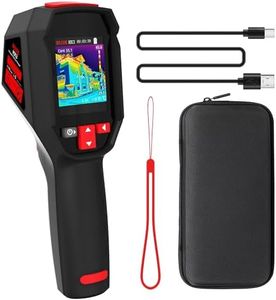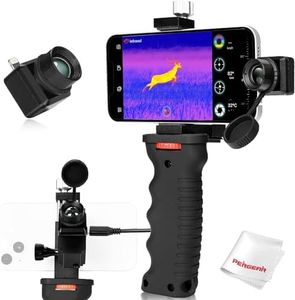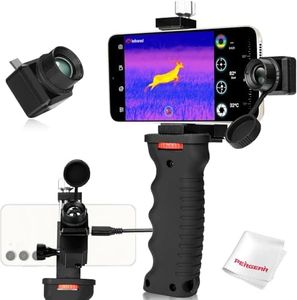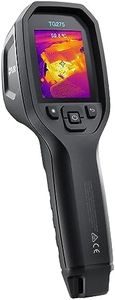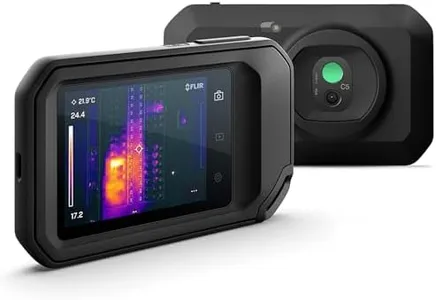We Use CookiesWe use cookies to enhance the security, performance,
functionality and for analytical and promotional activities. By continuing to browse this site you
are agreeing to our privacy policy
10 Best Thermal Cameras
From leading brands and best sellers available on the web.By clicking on a link to a third party's website, log data is shared with that third party.
Buying Guide for the Best Thermal Cameras
Choosing a thermal camera can be both exciting and a bit confusing if you're new to the technology. These devices let you see heat that is invisible to the naked eye, making them popular for home inspections, safety checks, wildlife observation, and even fun hobbies. To pick the best thermal camera for your needs, you should get familiar with the main features that determine how the camera performs and how easy it is to use. Understanding these features will help you match a camera's strengths with your intended tasks.ResolutionResolution in thermal cameras refers to the number of pixels in the thermal sensor, which affects how detailed the heat image looks. Higher resolution cameras show more detail, making it easier to spot small temperature differences or distant objects. Cameras with lower resolutions are often enough for basic tasks like looking for heat leaks around windows but can produce much blurrier images. If you plan to do professional work or need to detect small or far-away details, look for a high-resolution option. But if you only need general guidance for simple checks, basic resolution cameras are just fine.
Temperature RangeTemperature range tells you the lowest and highest temperatures the camera can sense. This is important because some cameras are made to spot slight temperature changes in cool environments, while others are built to handle very hot or cold places. If you need a camera for tasks like electrical inspections or checking engines, a higher temperature range is important. For home use or finding drafts, a more modest range will work. Decide what kinds of temperatures you'll usually deal with to make sure you get a camera that can handle it.
Thermal Sensitivity (NETD)Thermal sensitivity, often called NETD (Noise Equivalent Temperature Difference), measures how small a temperature difference the camera can detect. The lower the NETD value, the better the camera is at spotting tiny differences in temperature. If you want to spot very slight changes, like the path of a barely visible draft or small heat leaks, look for a low NETD value. If you're less concerned with subtle differences and just want to find big hot or cold spots, sensitivity is less of a concern.
Frame RateFrame rate means how many times per second the camera updates the thermal image. Higher frame rates give smoother video, which helps when you need to view moving objects or scan large areas quickly. Most basic cameras have a slow frame rate that’s enough for still targets, but professionals who need to watch moving people, animals, or processes should look for a higher frame rate. Think about whether you’ll mostly look at stationary objects or need smooth, real-time video.
Display Type and SizeThe built-in display size and quality affect how clearly you can see the thermal image on the device. Larger and brighter screens make it easier to spot details and use the camera in bright outdoor conditions. Some cameras connect to smartphones, using their screens instead. If you want a simple camera that’s easy to read in all settings, choose a model with a good built-in screen. If you’re comfortable using your phone as a display and want a smaller device, a phone-based thermal camera might suit you.
Image Storage and ConnectivitySome thermal cameras allow you to save images or videos, and others make it easy to transfer your files to computers or mobile devices. This matters if you plan to keep records, write reports, or share your findings. Look for models with simple buttons for capturing images and convenient options like USB, Wi-Fi, or Bluetooth for moving files. If you’re mainly going to use the camera for real-time viewing and don’t need to save images, you can skip advanced connectivity.
